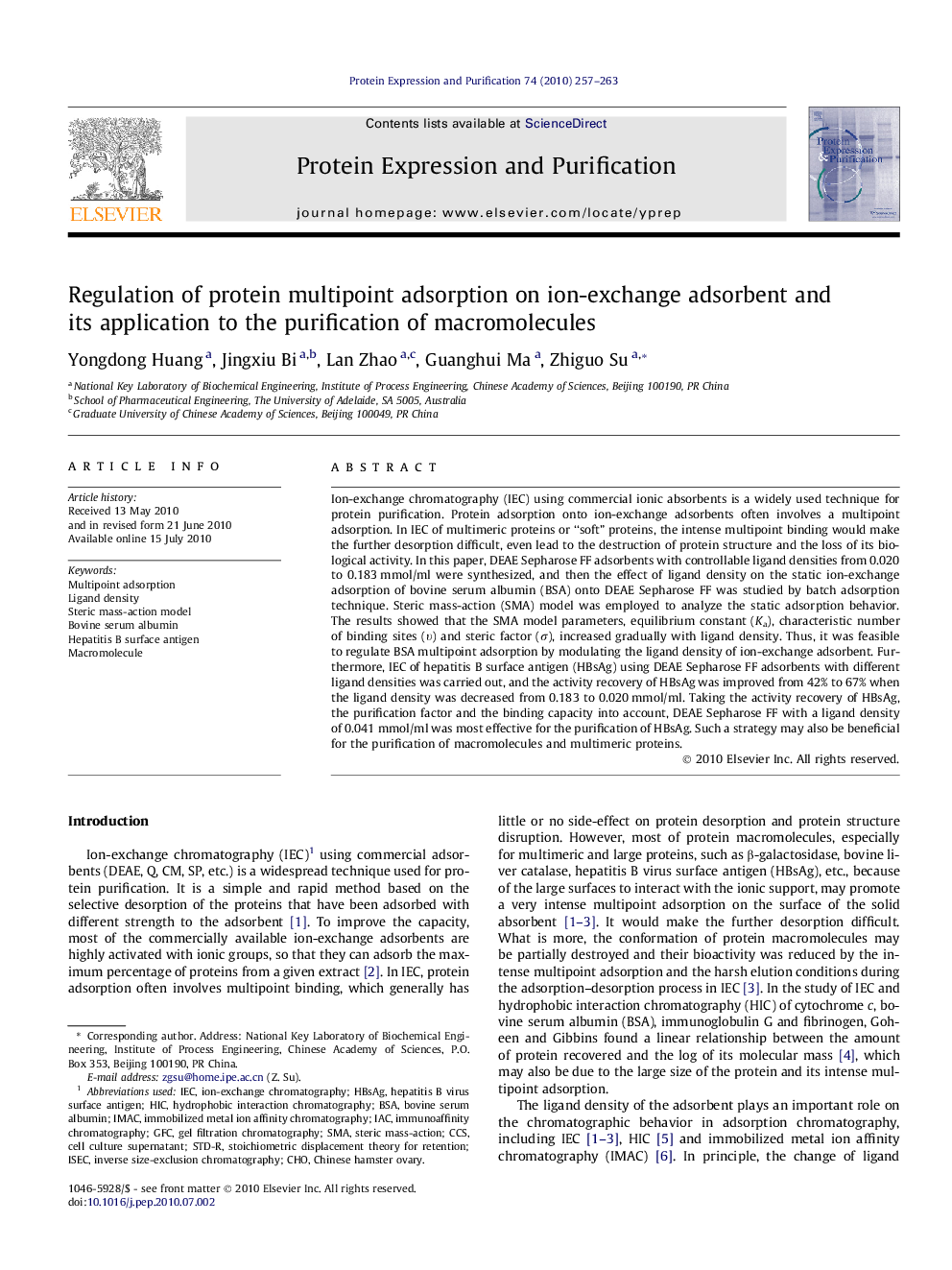| کد مقاله | کد نشریه | سال انتشار | مقاله انگلیسی | نسخه تمام متن |
|---|---|---|---|---|
| 2020951 | 1069218 | 2010 | 7 صفحه PDF | دانلود رایگان |

Ion-exchange chromatography (IEC) using commercial ionic absorbents is a widely used technique for protein purification. Protein adsorption onto ion-exchange adsorbents often involves a multipoint adsorption. In IEC of multimeric proteins or “soft” proteins, the intense multipoint binding would make the further desorption difficult, even lead to the destruction of protein structure and the loss of its biological activity. In this paper, DEAE Sepharose FF adsorbents with controllable ligand densities from 0.020 to 0.183 mmol/ml were synthesized, and then the effect of ligand density on the static ion-exchange adsorption of bovine serum albumin (BSA) onto DEAE Sepharose FF was studied by batch adsorption technique. Steric mass-action (SMA) model was employed to analyze the static adsorption behavior. The results showed that the SMA model parameters, equilibrium constant (Ka), characteristic number of binding sites (υ) and steric factor (σ), increased gradually with ligand density. Thus, it was feasible to regulate BSA multipoint adsorption by modulating the ligand density of ion-exchange adsorbent. Furthermore, IEC of hepatitis B surface antigen (HBsAg) using DEAE Sepharose FF adsorbents with different ligand densities was carried out, and the activity recovery of HBsAg was improved from 42% to 67% when the ligand density was decreased from 0.183 to 0.020 mmol/ml. Taking the activity recovery of HBsAg, the purification factor and the binding capacity into account, DEAE Sepharose FF with a ligand density of 0.041 mmol/ml was most effective for the purification of HBsAg. Such a strategy may also be beneficial for the purification of macromolecules and multimeric proteins.
Journal: Protein Expression and Purification - Volume 74, Issue 2, December 2010, Pages 257–263